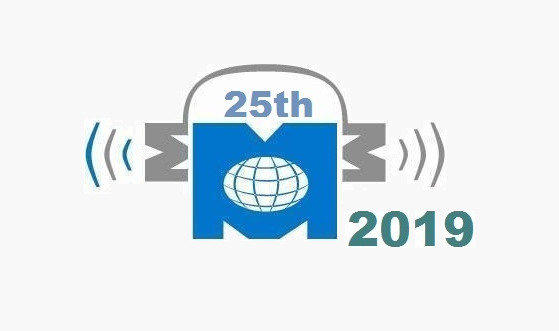We are excited to announce the two tutorials that will be delivered at MMM 2019. The tutorials’ topics and speakers are:
- – Multimodal Deep Learning, by Prof. Xavier Giro-i-Nieto
- – New Trends of Simulation and Augmented Visualization in Medicine, by Prof. Lucio Tommaso De Paolis
Details about each tutorial and speaker are given below.
|
Tutorial title: Multimodal Deep Learning Deep neural networks have boosted the convergence of multimedia data analytics in a unified framework shared by practitioners in natural language, vision and speech. Image captioning, lip reading or video sonorization are some of the first applications of a new and exciting field of research exploiting the generalization properties of deep neural representation. This tutorial will firstly review the basic neural architectures to encode and decode vision, text and audio, to later review the those models that have successfully translated information across modalities. The contents of this tutorial are available at: https://telecombcn-dl.github.io/2019-mmm-tutorial/. Speaker: Xavier Giro-i-Nieto Xavier Giro-i-Nieto is an associate professor at the Universitat Politecnica de Catalunya (UPC) in Barcelona, as member of the Intelligent Data Science and Artificial Intelligence Research Center (IDEAI-UPC) and also a visiting researcher at Barcelona Supercomputing Center (BSC). He works closely with the Insight Center of Data Analytics at Dublin City University and the Digital Video and MultiMedia at Columbia University, as well as his industrial partners at Vilynx, Mediapro, and Crisalix. He is the director of the postgraduate degree on Artificial Intelligence with Deep Learning at UPC School and coordinates the deep learning courses at UPC TelecomBCN, as well as general chair of the Deep Learning Barcelona Symposium 2018. He serves as associate editor at IEEE Transactions in Multimedia, and reviews for top tier conferences in machine learning, computer vision and multimedia. |
|
Tutorial title: New Trends of Simulation and Augmented Visualization in Medicine In medicine and surgery the VR/AR technologies make available new tools for the definition of the diagnosis by translating the information contained in medical images into a 3-dimensional virtual representation of the patient that is a realistic replica of living patient with the actual pathologies. This has allowed the development of a new form of medical education and the use of patient-specific surgical simulators permit to train and rehearse the surgical procedures without any risks for the patient. New applications of the AR technology allow overlapping the 3D virtual models of the organs on the real patient during the intra-operative procedures in order to provide surgeon with a sort of “X-ray vision” of the patient’s internal anatomy. The use of augmented visualization in surgery has the potential to bring the advantages of the open-surgery visualization also in minimally invasive surgery, produces a better spatial perception and reduces the duration of the surgical procedure permitting to perform the tasks in a way that is faster and safer. This tutorial will discuss:
Speaker: Lucio Tommaso De Paolis Lucio Tommaso De Paolis has a Degree in Electronic Engineering from the University of Pisa (Italy) and is an Assistant Professor of Information Processing Systems at the Department of Innovation Engineering of the University of Salento (Italy). His research interest concerns the study of the design and development of applications of Virtual and Augmented Reality and Human-Computer Interaction in medicine and surgery, cultural heritage and education. De Paolis is the Director of the Augmented and Virtual Reality Laboratory (AVR Lab) at the Department of Engineering for Innovation of the University of Salento and the responsible of the “Advanced Virtual Reality for Medicine” research group at the Laboratory of Interdisciplinary Research Applied to Medicine (DReAM) of the Hospital of Lecce, Italy. He is the vice-president of MIMOS (Italian Movement Modelling and Simulation) and the founder of AVR Med srl, a Spin-off company of the University of Salento. He teaches “Applications of Virtual and Augmented Reality” at the Master Degree in “Computer Engineering” of the University of Salento and at EUROMACHS (European Heritage, Digital Media and the Information Society). He has been a Visiting Professor in 2014 at the Tallinn University of Technology, in 2012 at the Vytautas Magnus University of Kaunas (Lithuania) and in 2011 at the University of Tallinn (Estonia). He has been visiting researcher in 2007 and 2010 at the Centro de Ciencias Aplicadas y Desarrollo Tecnologico (CCADET) of the Universidad Nacional Autonoma de Mexico (UNAM), Mexico City (Messico) and in 2007 and 2009 at the Computer Graphics Laboratory of the Sabanci University of Istanbul (Turkey). De Paolis has been the coordinator of some Italian and international projects focused on the application of Virtual and Augmented Reality in medicine, cultural heritage and education. He is the organizer of the International Conference on Augmented Reality, Virtual Reality and Computer Graphics (SALENTO AVR) |
